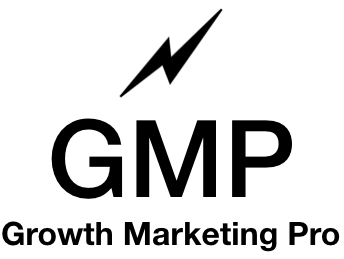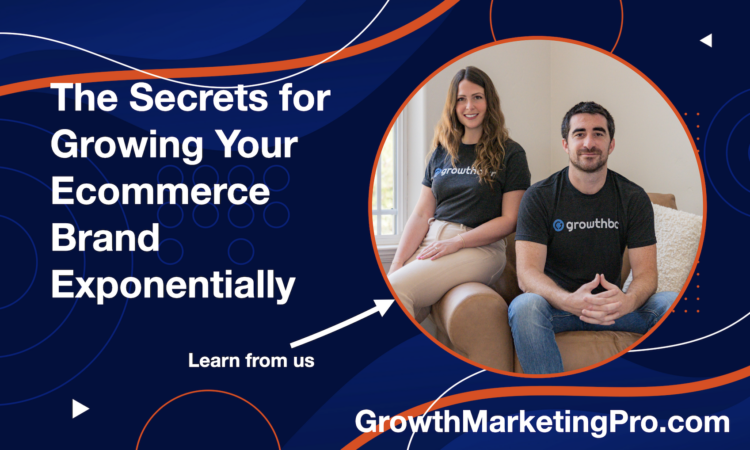- The Top 17 Direct Mail Companies - June 11, 2025
- The 11 Best Landing Page Builder Software Tools [2025] - June 11, 2025
- Instapage vs Leadpages vs Unbounce vs Clickfunnels - June 11, 2025
Google Ads are ad units that run on Google search pages.
Marketers love Google Ads.
Why?
- They’re scaleable: there’s almost infinite search volume on Google.
- They’re targeted: searches can get pretty targeted to the intent of the user.
What are Google Ads?
When you search Google, you see two types of results: advertisements and organic results.
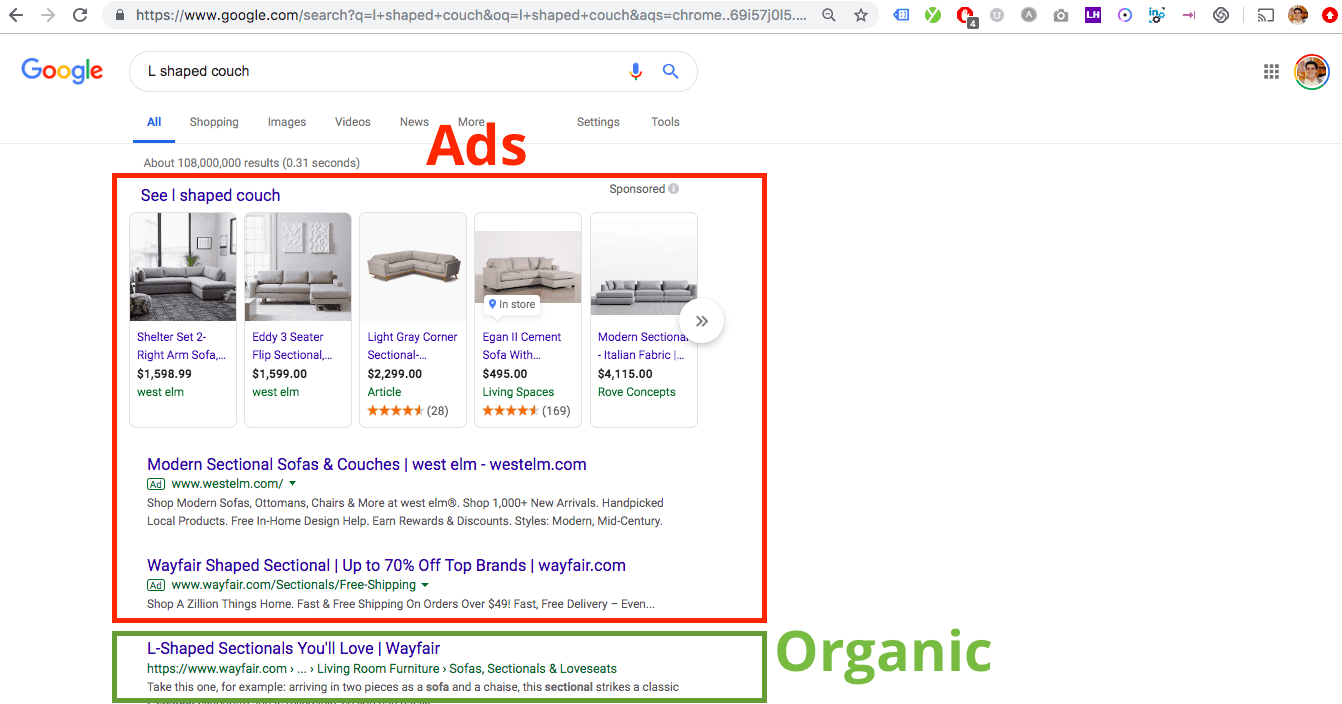
Ads are of course, the results on the search engine results page (SERP) with “sponsored” next to them.
Organic results are everything else.
As you’d expect, Google advertisers (also called search engine marketers) pay a pretty penny to advertise at the top of the search results page.
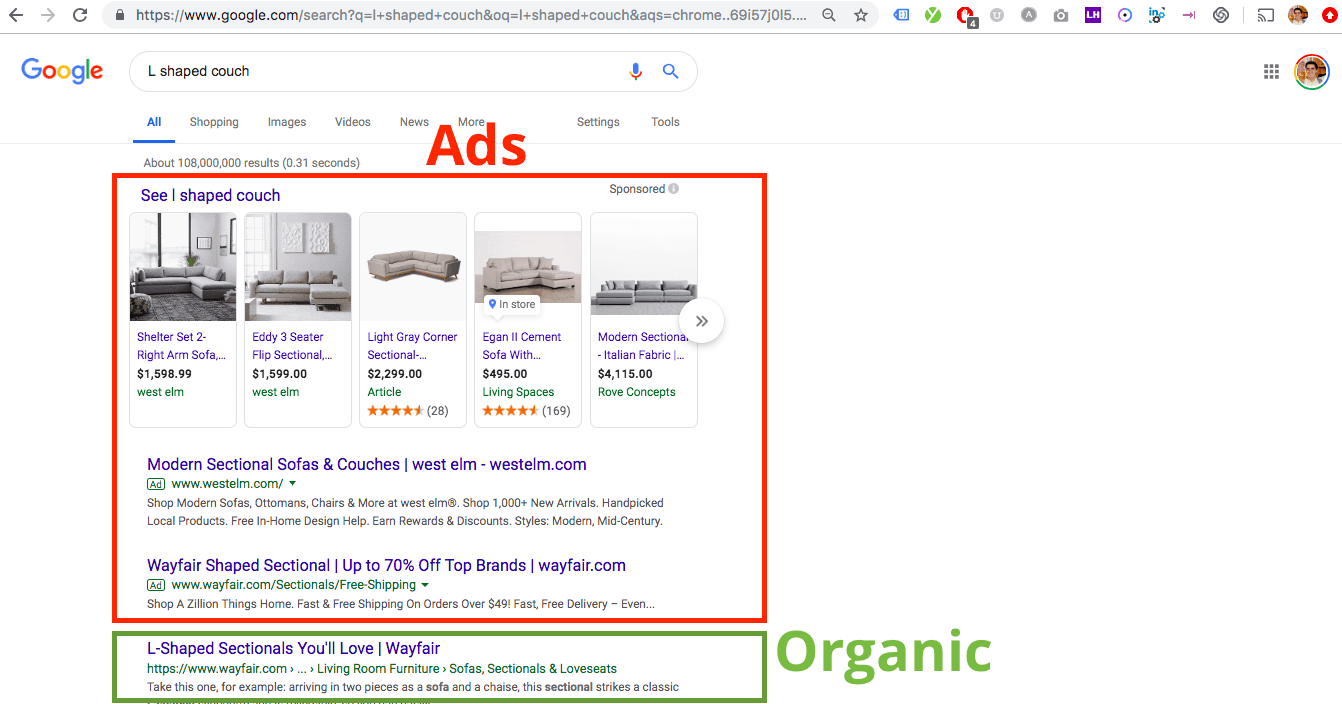
As you might expect, a huge amount of companies use Google Ads. Google Ads work across industries: from ecommerce to software as a service (SaaS), and service businesses like marketing agencies. But how about you? Will Google Ads work for your business?
Table of Contents
How Much Do Google Ads Cost?
Google NASDAQ:GOOG didn’t become a $817B company by giving away ad space.
Google Ads aren’t exactly cheap.
Amazon spent $158 million on Google Ads alone in 2013. See some of the other biggest spenders below.
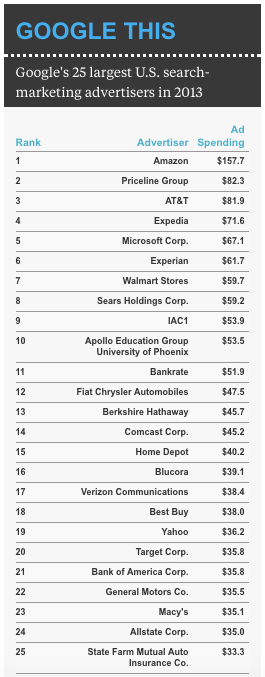
Some of the largest advertisers can bid very high on keywords and “win” the auctions, appearing #1 in Google’s search results.
Others can bid less and appear #2 or #3.
Still others don’t bid at all and instead focus on a search engine optimization strategy to try and appear at the top of the organic results.
Unsurprisingly, some industries have become famous for hyper-precise, hyper-competitive bid wars. The online travel vertical — Priceline and Expedia — is one of the most competitive.
Because search intent is so local, there are literally hundreds of thousands of SEM auctions happening in the travel industry at any given moment. Below is the SEMRush report for the “flights to san francisco” search query. This query is Googled over 12,000 times per month. Close derivatives of that term are searched many thousands more times.
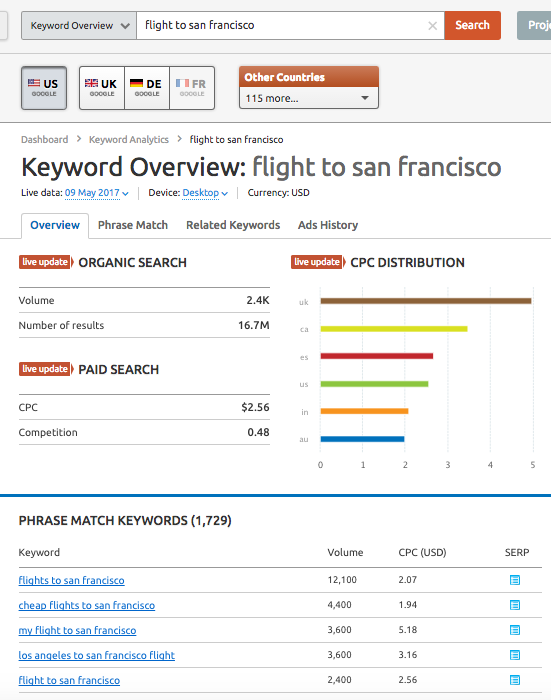
Now imagine the keyword combinations: “flight from san francisco to la,” “san francisco flight to boston,” “flight to boston from san francisco july 7.”
In the travel vertical, companies employ teams of search engine marketers to manage their portfolio of keywords, optimizing on a daily or even hourly basis. That shit is crazy!

Will Google Ads Work for My Startup?
The good news is that Google Ads are relatively affordable and easy to test for small companies too. You don’t have to spend millions.
Countless small businesses and tech startups have crushed it with a search engine marketing-focused acquisition strategy.
But which businesses aren’t Google Ads-friendly?
Google Ads May Not Work if…
1. You’re in a huge SEM vertical
With few exceptions, it is tough to make search engine marketing (SEM) work if your startup is playing in the travel, loans, legal and fashion space.
- You probably won’t beat Kayak.com, Priceline, Expedia and the rest in the travel search vertical.
- There are a lot of highly-capitalized online lenders who own the “lending” search verticals for real estate, personal loans, auto and student loans.
- Good luck beating LegalZoom, Avvo or RocketLawyer in the legal space (though local businesses can succeed in this space!).
- Zara, Nordstrom, Urban Outfitters, ASOS and every other retailer have “white tee shirt” somewhere in their Ads portfolio. You likely won’t beat the big fashion retailers.
Unless you are prepared to outbid and out-optimize your competition you will face an uphill battle in any of those search verticals.
Of course, there are exceptions and occasional pockets of success with Google Ads for almost any type of business.
2. You’re in a space with no search volume
While it is all-powerful — even omnipotent, Google cannot force Googlers to search for anything. Some verticals and products simply have no search intent.
For instance, if you’re selling a “salmon filet pillow,” you might do quite well, but not with SEM.

Pretty much nobody on earth is searching specifically for that.
Use a tool like SEMRush to determine if your startup product offering has search volume.
3. You’re a Blog or Online Publication with Low Lifetime Value
Google Ads is perfect for acquiring very specific (based on search intent) customers for as little as a couple bucks.
But blogs and online publications make very little revenue per visitor as compared with websites selling a product. If a blog is relying on selling digital ad space, they’re making just a few cents per visitor.
This blog makes a few hundred thousand dollars per year, but our revenue per visitor is only a dollar or so. If we get 30,000 site visitors in a given month, we make about $30,000.
We can’t possibly afford Google Ads — particularly when you consider that most Google Ad keyword bids are more than a couple dollars per click.
Try Google Ads If…
1. If Your business is urgent
Interestingly, local small businesses like locksmiths, glass fixers and repair shops perform pretty well with Google Ads.
Some of the auctions for those keywords bid keywords to $50 or more per click.
The reason is that these services are needed asap. If your car is broken down, you are likely to call the first or second Google search result to get it fixed because you can’t get to work without it.
2. There is high search volume and low competition
Do you remember the movie The Endless Summer – when Robert August and Mike Hynson crest the hill in South Africa and finally see the perfect wave at Cape St Francis?

That is what it feels like when search engine marketers find a batch of keywords that are high traffic and low competition.
While it’s tough to know whether your small business or startup will hit a jackpot of profitable keywords, but I highly recommend using SEMRush or the Google Keyword Tool to do your homework and find out.
In order to your research, you will simply type the keywords you’re considering into SEMRush or Google Keyword Tool. Both tools spit out a list of derivative keywords (sometimes hundreds or thousands) accompanied by a traffic score (“volume”) and competition score (“KD”).
SEMRush’s “Phrase Match Report” gave me 139 keywords for the search query “analytics software.”
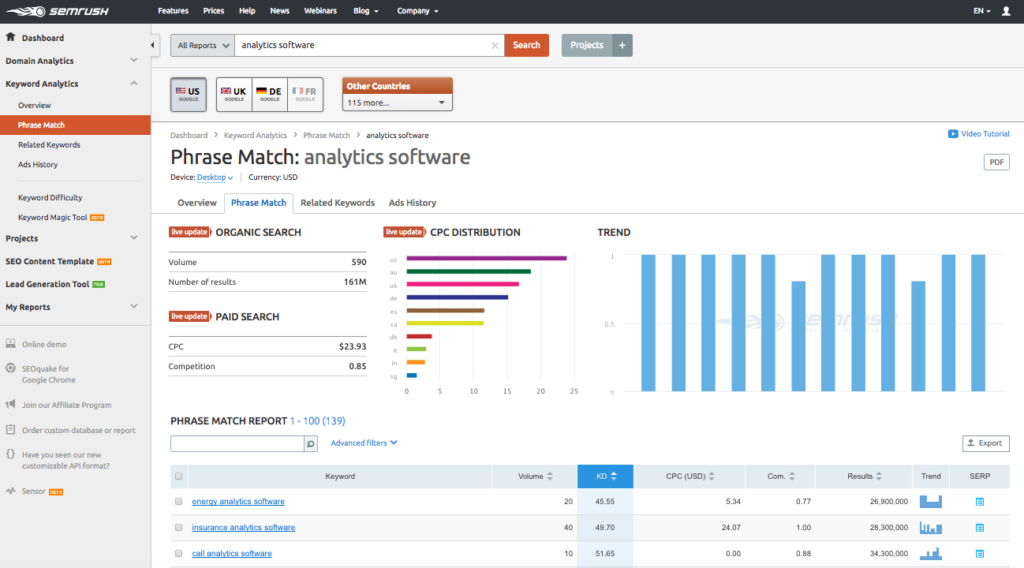
In order to find profitable keyword sets that relate to your product, you have to pick terms with low competition (KD score) and, low CPCs (cost per click).
CPCs dictate how much you will pay for each click that comes to your website from each keyword ad.
3. SEO is working
If you’re already mastering Google organic search (SEO), you may find success with Google Ads.
Want to read more? Learn how we’re making $90,648 this year with just one SEO strategy.
It makes sense. If you’re converting your organic traffic today, why not double down and get even more of the same traffic that’s working?
If you’re lucky enough to have an SEO strategy that’s working, check out the Google Search Console and landing page report in Google Analytics to uncover what keywords you’re ranking for and converting.
You should test bidding on those same keywords in the Google Ads editor.
What Next? How to Run Google Ads
Step 1: set yourself up to track your ads
-
Set up conversion tracking, so that Google Ads can report on cost-per-acquisition (the total advertising cost divided by the number of products sold), allowing you to optimize campaigns and keywords by performance on a cost-per-acquisition basis. Adding conversion tracking to the site is as simple as adding one line of code to your website. Set up conversion tracking here.
-
To start your campaign, go to https://adwords.google.com, find the “Get started now” button, and sign up for an AdWords account. Once you’re logged in, click the “Create your first campaign” button.
-
Click the “+ Campaign button.” From the drop-down menu, select the campaign type you want to use. Select “Shopping.”
Step 2: Determine Your Budget
Now that you have tracking in place, figure out how much you are willing and able to spend on Google Ads.
As discussed above, Google Ads are… not cheap.
But, that doesn’t mean they aren’t worth it.
In my mind, a great starting point for a Google Ad budget is $25 per day. You can obviously increase or decrease this amount once you have a better idea of what you need to bid per keyword. The nice thing about setting a budget is that Google will make sure you do not spend more than that amount – a great way to make sure you are tracking your spending carefully.

Another good way to set your budget is to figure out what percentage of clicks will become sales conversions.
If, for example, 5 out of 100 site visitors actually purchase a product, then you have a 5% conversion rate. With this knowledge, you can decide how much you are willing to spend for each person to purchase a product.
If you sell products that cost $1000, you are likely willing to pay more than someone who sells products that are $5.
Step 3: Set Your Location
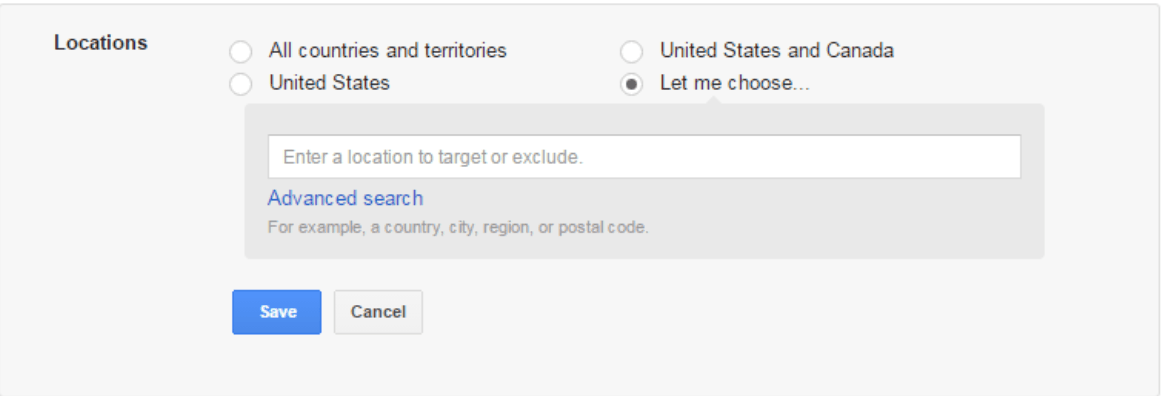
Google gives you the power to decide what geographical location you want your ads to come up in.
This is super important particularly for local businesses, because you can make sure your business’s ad only comes up in the areas you serve. This saves you money and increases your conversion rate.
You can even get really specific and target a particular radius from your zip code by clicking “Advanced search” and choosing “radius targeting.”
If, for example, you know that your customers are typically within a 15 mile radius of your business, you can target that area to get an even better conversion rate.
Another tip for using radius targeting is to set a collection of different radius targets and then adjust bid by location. This way, your ad spend will be focused on users who are closer to your locations.
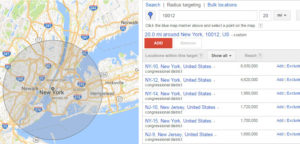
For example, you can put in your business’s address and then target two miles, six miles, and ten miles. Then, add bid adjustments, so that the closer radius has a 20% bid increase, the medium radius has a 10% increase, and the largest radius doesn’t have an increase.
Step 4: Choose A Network
With Google Ads, you can choose whether your ads are displayed exclusively on Google’s search results page – the search network option – or on the display network, which includes ads on Google content sites as well.
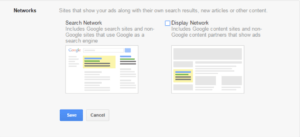
If you choose display network, your ad may show up on other sites like Gmail or YouTube. I suggest you start with search network, because this ensures that your ad will only come up when people search for your type of business or product.
Step 5: Choose Your Keywords
This step is crucial. The keywords you select for ad targeting are the ones that will determine who your ad winds up being targeted to. When that keyword is searched, your ad will come up.
So for example, say you ran a marketing blog and wanted to advertise your SEO course (just a thought).
You may consider targeting keywords like “SEO tools” “What is seo” and “seo marketing” (which have a search volumes of 8100, 14800, and 5400, respectively). Combining this with your geographic requirements will ensure you are hitting target prospects in your area.
To figure out which keywords are best for your business, I recommend using Google’s Keyword Planner.
Determining the Match Type of Your Keywords
Google Ads uses keyword match to decide when to display your ad, based on the keyword of your choice.
Match types allow for different variations of your keyword, broadening your ad’s capabilities. For example, your ad targeting the keyword “pizza in Boston” may be matched with other variations like “pizza in the Boston area” or “best pizza in Boston.”
Google offers four different keyword matching options to choose from:
- Broad Match: This is default match type that your keywords are assigned. It will allow you to reach the most extensive audience of all of these options. Yes, that may seem like a good thing, and in some cases it can be! However, be conscious of the fact that it may lead to your site being advertised in queries that are irrelevant to your business.
- Broad Match Modifier: This option gives you a bit more control than the first option. It allows you to lock certain keywords into place. All you need to do is add a “+” sign in front of the word – this lets Google know that the search needs to include that word in order to trigger your ad.
- Phrase Match: If you want to harness even MORE control over your ads, you can! With phrase match, your search term needs to be searched in the exact order of words that you specify. There can still be different words before or after the key phrase, but those specified words must be in the correct order for your ad to be triggered.
- Exact Match: This is, yes, exactly how it sounds. In order for your ad to be triggered, the searcher must type your exact phrase. Nothing before, nothing after, and nothing in the middle.
I recommend you use a combination of these 4 options when starting out. As you progress and hone your Google Ads knowledge, you will be able to figure out which version works best for you.
Step 6: Set that Keyword Bid
The keyword bid is the amount you are willing and able to pay for a click on your ad. Here, you are bidding against other sites for the highest position in the Google search console – if another site targeting your same keywords is willing to pay more for a click, they will show up higher than your ad.
Google’s Keyword Planner will tell you how much you need to bid to rank effectively.
Step 7: Write Your Ad Copy
So you’ve set it up – you know how much you are going to spend, how many keywords you are going to target, and how to run Google ads.
The final step is to write your ad. You will need to write two headlines and a short description.
Each line of text has a limited number of characters – 30 characters per headline and 90 for the description – so make sure your ad is direct and clear.
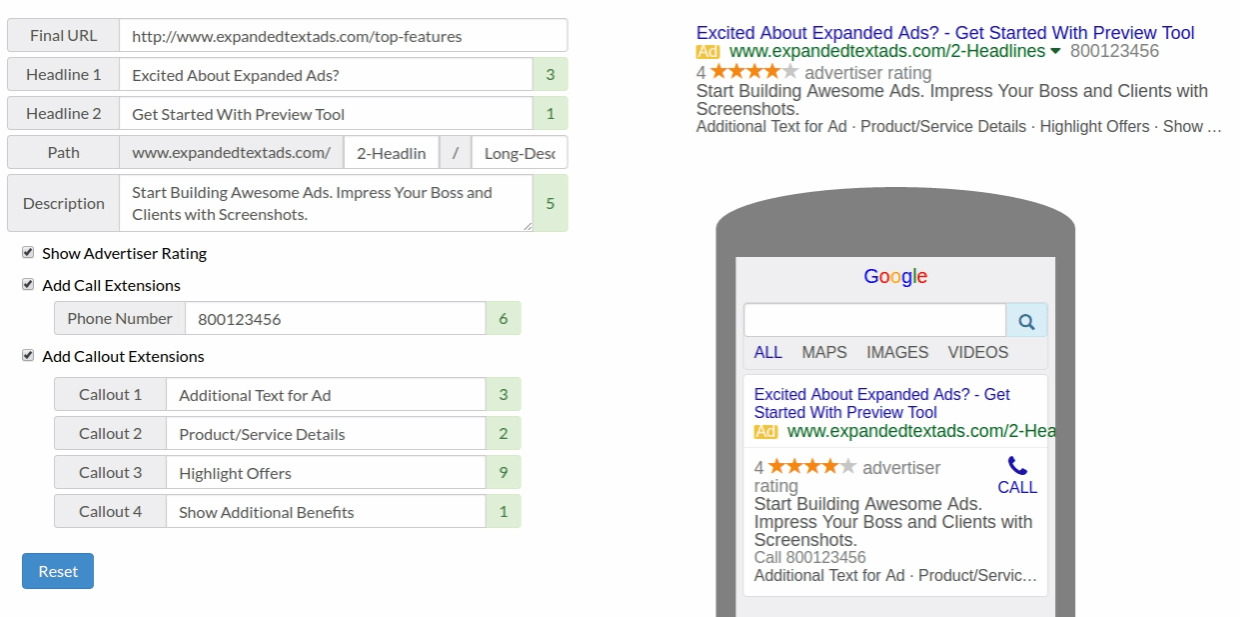
Tips to Writing Effective Google Ads:
- Keep it simple. Make sure your call to action is clear and obvious.
- Answer the user’s question. You know what they were searching for – make sure your ad is an answer to their problem.
- Include click-to-call and click-for-directions. Make it as easy as possible for the user to engage.
- Use actionable language. Tell your user what to do. It works.
- Try landing pages. Create better looking landing page experiences for searchers with a tool like Instapage.
Conclusion
It’s often worth trying Google Ads. It can work at some scale for some companies – who knows it could be 1% of your marketing budget or 90%.
The only way to really know is to run a small test.
Let’s say Ads works for you. What next? You can either run it yourself or hire an agency to run your campaigns and optimize daily.
Google Ads takes some work to get good at, but for many startups and small businesses, the juice is worth the squeeze.
As a next step: if you can crack the Google Ads code and create great, profitable campaigns, you might try retargeting campaigns to re-engage the audience that’s already on your website.
